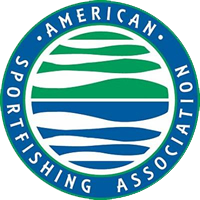Corpus Christi, TX — The Palacios Marine Agriculture Research (PMAR) non-profit organization has plans and the funding to produce and distribute fifteen billion oysters to the Texas coast by 2025. A substantial monetary commitment from the Ed Rachal Foundation has led to both PMAR’s creation and the unprecedented marine science-based push for restoring Texas’ depleted oyster reefs and once thriving population.
There are other large scale and well-known oyster restoration efforts with similar restoration goals such as the Horn Point Oyster Hatchery and The Billion Oyster project in New York Harbor. PMAR’s conservation efforts extend to the whole Texas coast which anchors the entire western margin of the Gulf of Mexico. Despite being a large, resilient marine ecosystem, it is still vulnerable to man-made disasters like the Deepwater Horizon oil spill and climate-driven stressors like sea level rise and warming seas. These challenges have exposed the limits of resiliency in Texas bays and estuaries.

The residents of our coastal margins, both marine life and human communities have borne the brunt of that diminished capacity to absorb the impact of those relentless drivers and stressors. A recent report by the National Academy of Science Gulf Research Program focuses on these issues in detail and recommends actions to address them. PMAR will incorporate recommendations from the consensus study to improve community and ecosystem resiliency, mitigating underlying stressors affecting our coastal ecosystems and the human communities and marine life that depend on them by focusing on one keystone species – the oyster.
A healthy oyster population provides many ecosystem services that contribute to human wellbeing and improve the health and productivity of Texas bays and estuaries. These benefits extend from habitat for sportfish to sustaining water quality to countering sea level rise. Healthy oyster reefs and oyster populations interact synergistically with other habitats like seagrass meadows and emergent wetlands by reducing turbidity and erosion. PMAR’s Fifteen Billion Oyster Project will address many of the issues raised in the Academy reports, including projects of large ecosystem scale that can measurably affect entire systems and the people that live around them and depend upon them for their livelihood.
PMAR will work with state and federal resource agencies and conservation NGO’s to maximize opportunities to apply billions of oysters in novel ways to enhance and accelerate oyster reef restoration and nature-based ‘living shoreline’ protection, as well as generation of carbon credits that could fund and maintain such efforts.
PMAR will also work with oyster fishery and aquaculture interests to create a sustainable and conservation-oriented future for this beleaguered industry.
“Oysters are an important part of the coastal environment, improving water quality, providing habitat for fish and other species, protecting shorelines from erosion and as a fishery,” said Dr. Joe Fox, PMAR executive director and past Chair for Marine Resource Development at the Harte Research Institute (HRI). “But oysters are in decline worldwide – it is estimated that 90 percent of native oyster reef habitats have been lost, compared to historic abundance.”

“Contributing to that problem are unsustainable harvests and destructive dredging of oyster reefs,” Fox said. “The removed shell generally ends up in the landfill after the oysters are consumed, leaving young oysters without hard substrates for attachment and building of new reef.” “We’re fortunate to have an incredible opportunity to reverse the decline of the Texas’ Gulf Coast ecosystem and oysters are the keystone species for everything else,” Fox said. A mobile hatchery the size of an 18-wheeler truck trailer is in operation today in the Texas mid-coast town of Palacios and is the first mobile hatchery west of the Mississippi River. This high-tech facility can produce up to twenty million oyster larvae per week.
PMAR’s team of experts led by Hatchery Manager Rob Hein have produced more than 200 million larvae.
“I think it must be like working on the international space station,” noted Hein. “It’s a relatively small linear tube packed with equipment and not much space to spare, with algae and oyster larvae developing all around. It keeps you on your toes.”

Undoubtedly, the mobile hatchery is a high pressure and resource-intensive operation and cannot replace a larger scale brick and mortar facility in the long-term. It does fill an important gap in contributing to much-needed restoration right now and is a catalyst to a new Texas coastal industry. A much larger facility is under construction nearby at the former Camp Hulen U.S. Army Base leased by PMAR from the Ed Rachal Foundation. Once complete, the industrial scale hatchery will enable PMAR to produce a phenomenal amount of eyed oyster larvae ready for placement in suitable and historic oyster reef habitats.
Destructive fishing practices and natural and human-caused disasters have taken a significant toll on oyster reef habitat in the Texas Gulf Coast region. Once a booming commercial industry, oyster fishing has been on a steady decline for many years along the Gulf.
Today, oyster experts and biologists at PMAR are making moves to reverse unsustainable trends in the Texas oyster industry. PMAR is inspired by the way Texas Parks and Wildlife (TPWD) reversed the fortunes of the red drum (Sciaenops ocellatus) and spotted seatrout (Cynoscion nebulosus), commonly known as the speckled trout,” said Dr. Larry McKinney, PMAR Board member and retired Texas Parks and Wildlife Department Director of Coastal Fisheries.
“We are also pleased with the support from a coast-wide restoration partnership made up of like-minded conservation organizations. PMAR’s efforts will aid all aspects of the oyster industry but especially the relatively new to Texas, and rapidly growing, oyster aquaculture industry. Assisting the oyster aquaculture industry achieves two goals for PMAR,” Dr. Joe Fox said.
“A healthy aquaculture industry takes pressure off the commercial oyster fishery, conserving reefs, creating new jobs and adding to the coastal economy. At the same time, oysters on the ranches are filtering water that improves ecosystem health and creating fishable habitat. Everyone wins if they are successful.”

Today, the Texas oyster aquaculture industry depends on out-of-state hatcheries to supply the seed oysters that are vital to the viability of Texas oyster ranches. Yes, in true Lone Star form, they are referred to as oyster “ranches” in Texas.
PMAR has supplied seed oysters to several Texas oyster ranchers from PMAR’s mobile hatchery and nursery facilities over the last month. More will be made available as demand and the industry grows. PMAR remains focused on supporting restoration practitioners along the coast with at least two brick and mortar hatcheries in the future. In the meantime, PMAR’s mobile hatchery keeps pumping out oyster larvae, millions at a time.
Because Texas oyster reefs are the state’s most threatened habitat, their current depleted status Dr. Larry McKinney also contributes to diminished ecosystem health. The hatchery output will primarily focus on restoration and will facilitate the development of a conservation-orientated aquaculture industry that will contribute to overall restoration.
“In order to successfully introduce 15 billion oysters, PMAR’s team will undertake more initial research to explore the development of new reefs and restoration of existing damaged reefs,” said Gail Sutton, PMAR Director of Operations. “Our initial research project will be in the area of oyster reef restoration and conservation aquaculture.”
“In addition, a pilot project will allow PMAR to evaluate colonization of new or existing reefs,” Sutton said. “We will conduct a pilot-scale evaluation of seed oysters, grown in a hatchery, for enhanced survival with considerations for variables like salinity and temperature tolerance.”

Using eyed-larvae or spat-on-shell, PMAR will develop restoration projects at various locations along the coast to monitor and measure the efficacy of the restoration process.
Aiding Texas oyster farmers is another PMAR goal hoping to reverse unsustainable trends in the Texas oyster industry through a large-scale hatchery system with support from a coastwide restoration partnership. Providing seed oysters for commercial oyster ranchers along the Texas coast is already taking place.
Workforce development and seed production by PMAR will help jumpstart the Texas oyster ranching industry and bolster the economic resilience of coastal communities and stabilize long-term oyster stocks.
The goal is to create a sustainable commercial aquaculture industry, which can develop seed oysters in hatcheries, grow them in a reliable, protected environment and then harvest when ready — all while maintaining the integrity of the coastal environment.
“Partnering with state and federal agencies, academic and research institutions, and the aquaculture industry to develop new critical oyster reef habitat is a foremost objective, Dr. McKinney said, “To help further develop the industry, funding from the National Oceanic and Atmospheric Administration through the Texas Parks and Wildlife Department is being used for an oyster farming evaluation project in Matagorda Bay.”

Promoting responsible stewardship of the Gulf Coast environment and resources through education and outreach is another role PMAR plans on fulfilling for the Texas Coast along with producing organisms for local aquaculture, restoration efforts and providing a source of replacement oysters for those affected by catastrophic events. It will also be involved in educating producers about environmentally sustainable production and harvesting methods.
“A lot of people love to eat oysters, but they often don’t realize what an important role they play in our environment,” said Gail Sutton, retired HRI associate director and co-founder of the institute’s Oyster Recycling Program, Sink Your Shucks. “They are the water treatment plants of the bays — one oyster can filter up to fifty gallons of water a day. They are also a happening place to be underwater, providing habitat and nurseries for species like fish and crabs. When a reef dies or is removed, the water quality goes down and the fish leave. It is an indicator of environmental degradation.”
Because of their proven environmental benefits, oyster reef restoration has become an increasingly popular environmental mitigation method in coastal communities worldwide.
About PMAR
Palacios Marine Agricultural Research (PMAR) was established by the Ed Rachal Foundation and is dedicated to restoring oysters on the Texas coast. Oysters are keystone species that make significant contributions to the health of our bays and estuaries, supporting our state’s $80 billion coastal economy. For additional information, please visit https://pmartexas.org/










